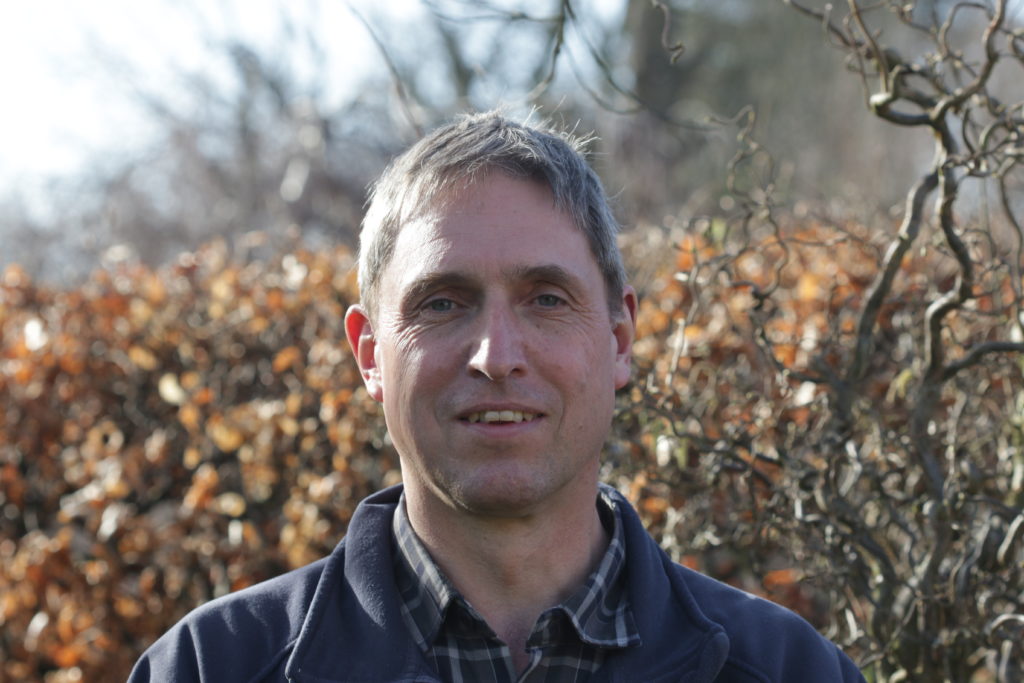Developing the evidence base for nature conservation.
“I have spent over 30 years as a conservation scientist, studying the relationships between land-use change and biodiversity, and focusing mainly on the conservation of bird populations in agricultural systems, from lowland England to the Scottish uplands and the machair of the Western Isles.
“My first postdoctoral research was at Edinburgh University in 1990-1991 studying the dispersal dynamics of dippers, after which I had spells at the British Trust for Ornithology and Oxford University’s Edward Grey Institute, leading some of the early studies of the impacts of agricultural intensification of farmland bird populations, including one of the first major studies of the biodiversity outcomes of conversion of farmland to organic farming systems.
Challenging, diverse and inspiring
“In 1996, I found my professional home in the RSPB’s Conservation Science team and have been lucky enough to work there ever since, leading the science team in Scotland for almost 20 years from 2001-2020, and becoming Director of Science in September 2020. In this role I now lead a team of over 60 scientists who deliver the natural and social science to inform all of RSPB’s conservation work in the UK and internationally. Much of this work is delivered in collaboration with statutory conservation agencies, universities, research institutes and Birdlife International partners.

“Twenty-five years on, my scientific life at RSPB remains challenging, diverse and inspiring. Whether we are seeking to inform policy and advisory colleagues on the development of land management schemes, identifying measures that will improve the management of RSPB’s nature reserves, or diagnosing the causes of decline of our most threatened species, we have brilliant, dedicated colleagues alongside us to make immediate use of this scientific work. To see my own and my team’s work so often taken forward to help deliver visible, tangible conservation impact is all the inspiration I could ever wish for.
From conservation problem to conservation impact – through PhD studentships
“I have been fascinated by natural history, and especially birds, since the age of nine, inspired by my grandfather’s knowledge of birds and his recollections of such long-lost species as corncrakes that still nested in local hayfields in West Yorkshire in the early twentieth century. But my prospects for an ornithological career were kick-started when my much-missed mentor Aubrey Manning, then Professor of Natural History (what a job title!) at Edinburgh University, offered me a PhD opportunity studying social organisation in great tits. Ever since, I have been keen to support others to launch their own scientific and conservation careers by putting bird conservation challenges at the heart of postgraduate studentship projects.
“During my time in Oxford, PhD studentships focused on the conservation challenges faced by farmland species such as skylarks, linnets, yellowhammers, swallows and house sparrows, and played a significant role in influencing the early evolution of UK agri-environment schemes. Since returning to Scotland, my PhD studentship collaborations with the Universities of Stirling, Aberdeen and Edinburgh have informed successful agri-environment scheme measures for corn buntings in eastern Scotland; developed understanding of the conservation needs of breeding waders in upland and montane grasslands; and diagnosed the likely cause of a long-term decline in cuckoo populations.
“As well as helping to discover and test conservation solutions for these species, many of the students who undertook these projects have moved on to influential conservation science careers in academia, the conservation NGO sector and in science funding.”
Jeremy Wilson is Director of Science at the RSPB and is an Honorary Professor at the University of Stirling. The work of the RSPB Conservation Science team is supported by many funders and partners, including Natural England, Nature Scot, the Joint Nature Conservation Committee, Marine Scotland, Defra, the Natural Environment Research Council, British Trust for Ornithology, and the Endangered Landscapes Programme of the Cambridge Conservation Initiative.
This post is part of a series showcasing Scotland’s innovative, high-impact research supporting biodiversity conservation, in partnership with Scottish Government and NatureScot. Read the rest of the series here.
Further reading
McCallum, H.M., et al. 2016. A role for liming as a conservation intervention? Earthworm abundance is associated with higher soil pH and foraging activity of a threatened shorebird in upland grasslands. Agriculture, Ecosystems and Environment 223: 182—189. https://doi.org/10.1016/j.agee.2016.03.005
Roos, S., et al. 2018. A review of predation as a limiting factor for bird populations in mesopredator-rich landscapes: a case study of the UK. Biological Reviews 93(4): 1915—1937. https://doi.org/10.1111/brv.12426
Watson, A. & Wilson, J.D., 2018. Seven decades of mountain hare counts show severe decline where high-yield recreational game bird hunting is practised. Journal of Applied Ecology 55(6): 2663—2672. https://doi.org/10.1111/1365-2664.13235
Denerley, C., et al. 2019. Breeding ground correlates of the distribution and decline of the Common Cuckoo Cuculus canorus at two spatial scales. Ibis 161(2): 346—358. https://doi.org/10.1111/ibi.12612
Sutherland, W.J., et al. 2022. A horizon scan of global conservation issues for 2022. Trends in Ecology & Evolution 37(1): 96—104. https://doi.org/10.1016/j.tree.2021.10.014
Jeremy’s full publication list can be accessed here.
